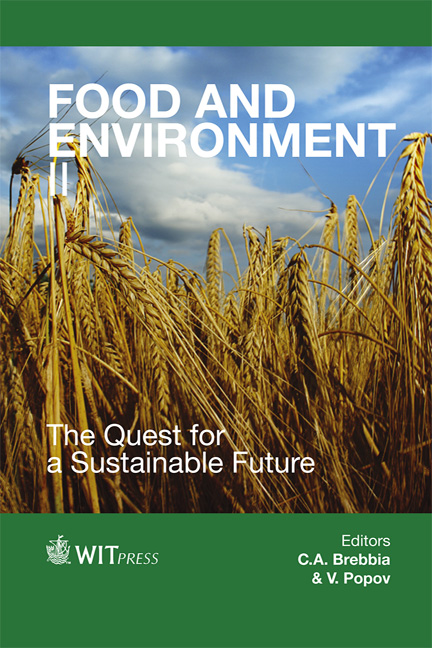Characterization Of Climate And Crop Productivity Using DSSAT For SW Uttarakhand, India
Price
Free (open access)
Transaction
Volume
170
Pages
10
Page Range
113 - 122
Published
2013
Size
723 kb
Paper DOI
10.2495/FENV130111
Copyright
WIT Press
Author(s)
S. K. Tripathi, G. Pranuthi, S. Dubey, G. V. Kumar & L. Mfwango
Abstract
Haridwar district in south west Uttarakhand India is agriculturally very sensitive as this contributes about 35% food grain and 80% sugar to the total production of the state. Weather conditions affected production both directly and indirectly. DSSAT is a very useful tool presently available for yield forecasting taking into account the weather condition, soil condition, crop management condition and genetic coefficients. Weather data (1979–2011) was collected from the Indian Institute of Technology, Roorkee whereas the data of soil, crop management and genetic coefficients were collected conducting survey from different parts of the district. Acreage and yield data of rice, wheat and sugarcane of the district was obtained from the office of the Director Agriculture Uttarakhand for the period 2000–2011. Weather data analyzed using DSSAT recorded 1026 mm/year average annual rain with 68 rainy days/year and 65% probability of wetness/year in Haridwar. Actual average yield of rice, wheat and sugarcane was reported as 22.4 q/ha, 25.0 q/ha and 609 q/ha respectively. The DSSAT however forecasted the average yield of rice and wheat as 26.3 q/ha and 28.2 q/ha respectively. Marginally higher forecast of yield in rice and wheat over the actual through DSSAT needs further scrutiny. Regression model however responded at par with the actual forecasting the average yield in rice as 22.9 q/ha, wheat as 25.2 q/ha and sugarcane as 610 q/h. These observations confirm the scope of using DSSAT in characterising weather condition and crop yield forecasting in Uttarakhand. Keywords: bhabhar, khadar, DSSAT, rabi, kharif.
Keywords
Keywords: bhabhar, khadar, DSSAT, rabi, kharif.





